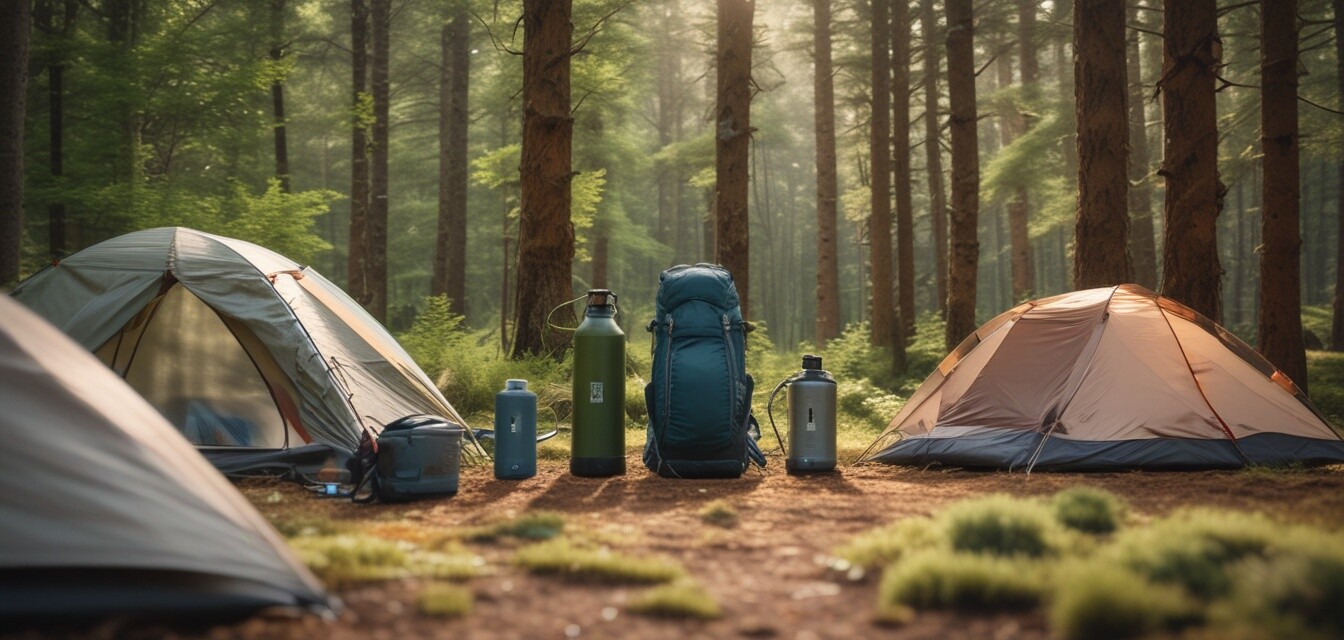
As an Amazon Associate, I earn from any qualifying purchases, at No Extra Cost to You.
Best Eco-Friendly Outdoor Gear and Accessories
- Eco-friendly gear reduces your environmental impact.
- Choosing sustainable materials supports the planet.
- Look for brands prioritizing social responsibility.
- Check out our Buying Guides for more gear insights.
As the world becomes more environmentally conscious, many backpackers are looking for ways to minimize their impact while still enjoying the great outdoors. Eco-friendly outdoor gear and accessories have emerged as a solution for those who want to experience nature responsibly. In this guide, we will explore the top eco-friendly gear options, their benefits, and how to choose them wisely for your adventures.
Why Choose Eco-Friendly Gear?
Choosing eco-friendly gear is about more than just sustainability; it reflects a commitment to preserving the environment for future generations. Here are a few reasons why you should consider it:
- Reduced Waste: Eco-friendly products often use biodegradable or recyclable materials to decrease waste.
- Conservation of Resources: Many eco-friendly brands focus on reducing the need for natural resources through sustainable practices.
- Support for Ethical Companies: By choosing eco-friendly gear, you are often supporting businesses that prioritize ethical labor practices and environmental stewardship.
Types of Eco-Friendly Gear
Let’s delve into various categories of eco-friendly outdoor gear and accessories that every environmentally conscious backpacker should consider:
1. Eco-Friendly Backpacks
Look for backpacks made from recycled materials or organic fabrics. Many brands now offer sustainable options that are functional and stylish.
2. Biodegradable Tents
A growing number of companies are producing tents that break down more quickly when disposed of, minimizing their impact on the environment.
3. Reusable Water Bottles
Replacing single-use plastic bottles with reusable ones significantly reduces plastic waste. Choose stainless steel or BPA-free materials to further enhance eco-friendliness.
4. Sustainable Sleeping Bags
Sleeping bags made from recycled or organic materials provide warmth while being gentle on the planet.
5. Solar-Powered Gadgets
Devices like lanterns and chargers that utilize solar energy can reduce reliance on disposable batteries.
Key Features to Look For
When shopping for eco-friendly gear, consider the following features:
- Materials: Opt for products made with recycled, organic, or sustainably sourced materials.
- Durability: High-quality goods that last longer minimize waste and save money over time.
- Certifications: Look for products that have certifications like Fair Trade, Global Organic Textile Standard (GOTS), or other eco-labels.
Comparison of Eco-Friendly Gear Options
| Item Type | Material | Brand Ethics | Price Range |
|---|---|---|---|
| Backpack | Recycled Polyester | Fair Trade Certified | $70 - $150 |
| Tent | Biodegradable Nylon | Eco-Friendly Practices | $100 - $300 |
| Water Bottle | Stainless Steel | Sustainable Sourcing | $20 - $40 |
| Sleeping Bag | Recycled Down | Animal Welfare Focused | $80 - $200 |
| Solar Lantern | Recyclable Materials | Renewable Energy Use | $30 - $80 |
Supporting Eco-Friendly Brands
It's essential to support brands that align with eco-friendly principles. Many manufacturers are making strides in transparency and sustainability. Research brands and favor those actively working to reduce their carbon footprint.
Being socially responsible doesn't only mean choosing eco-friendly products. It's also about making informed purchases that contribute to a better world.
Conclusion
In a world where outdoor enthusiasts can easily lessen their impact, choosing eco-friendly gear is a forward-thinking choice. By investing in sustainable products, you're not just enhancing your backpacking experience, but you’re also protecting the environment. Explore backpacks, tents, and cooking gear to make your next trip both enjoyable and eco-conscious.
Pros
- Reduces environmental impact
- Promotes sustainable practices
- Supports ethical brands
Cons
- Often more expensive than traditional gear
- Availability may be limited
Tips for Beginners
- Start small by replacing commonly used items with eco-friendly alternatives.
- Research brands to understand their sustainability practices.
- Join online communities focused on eco-friendly outdoor adventures for tips and support.